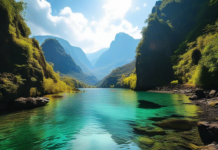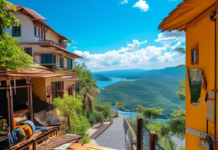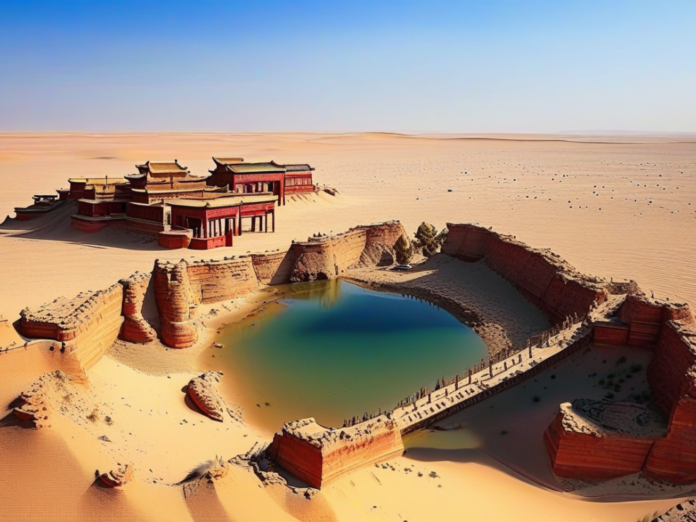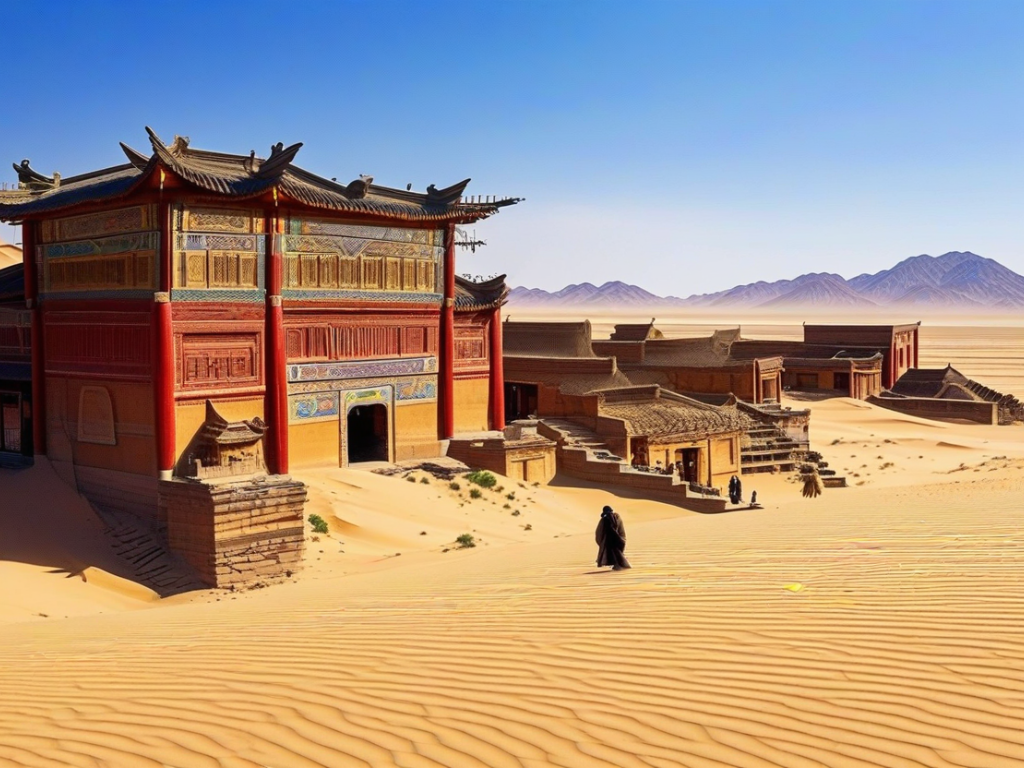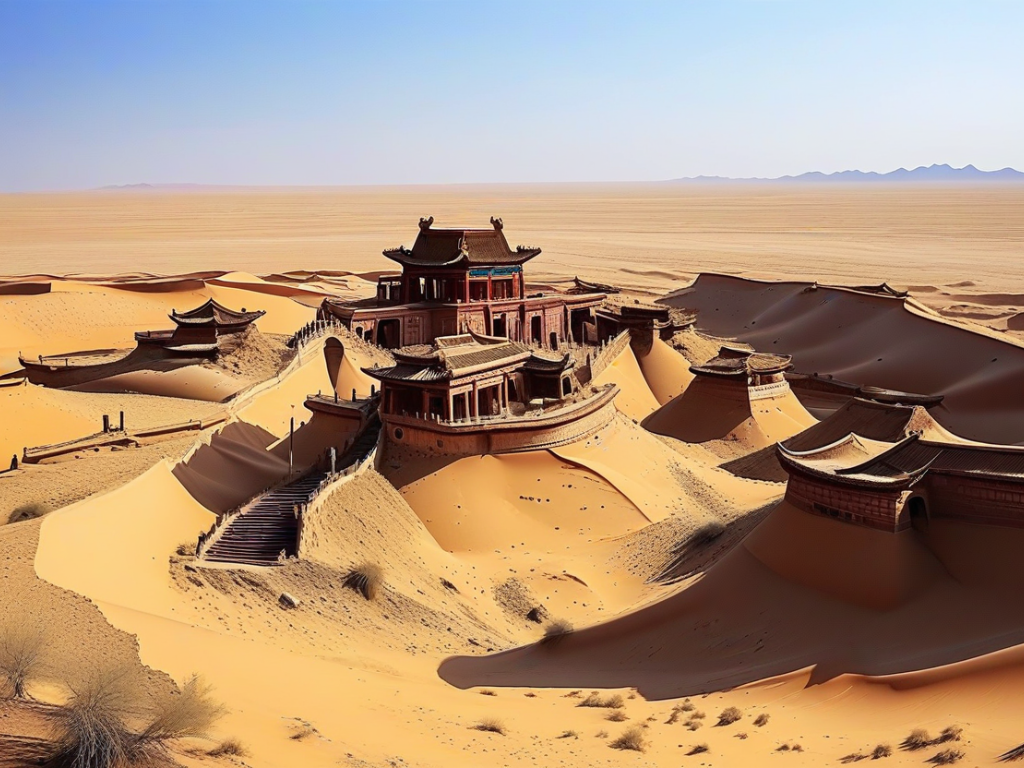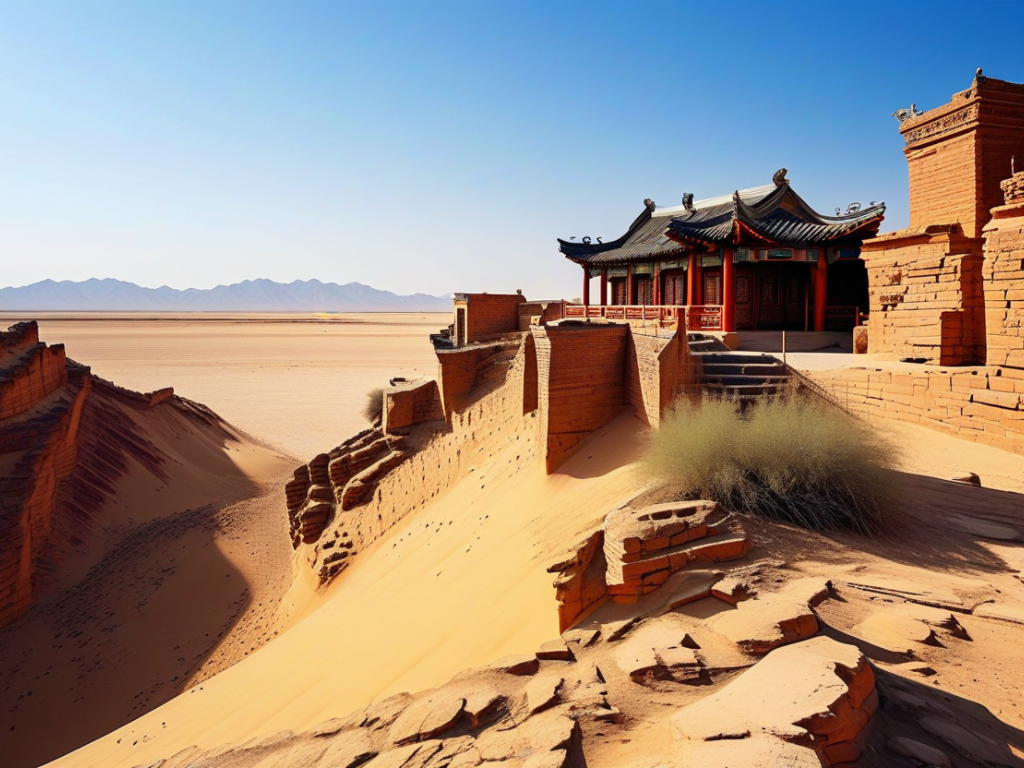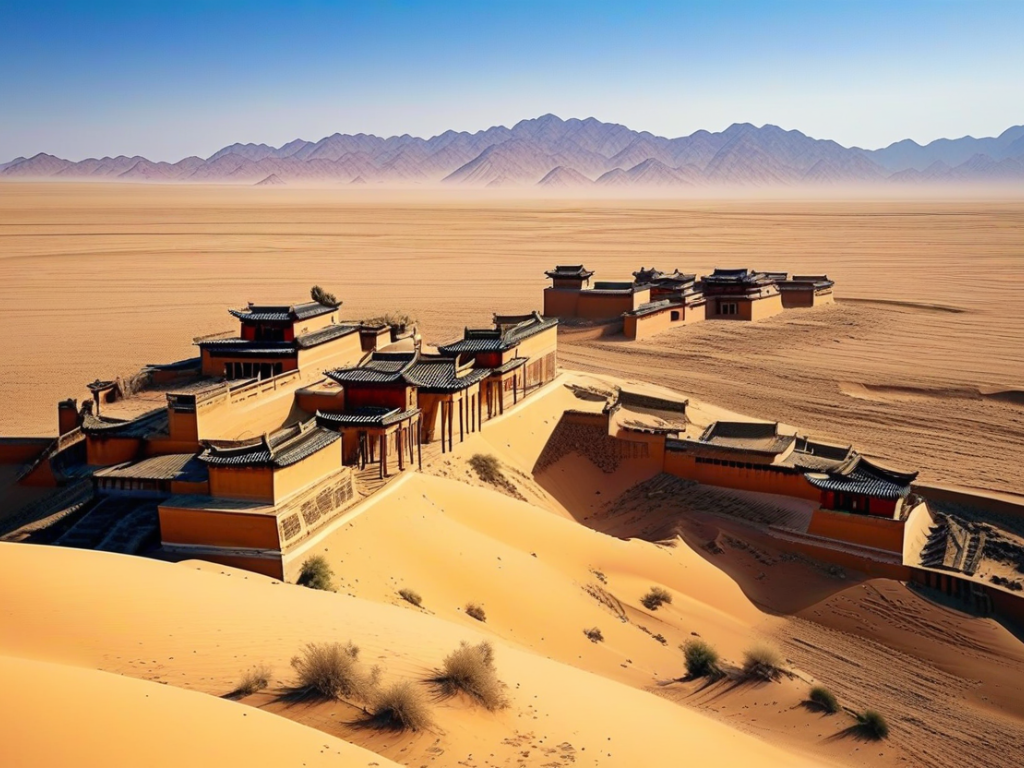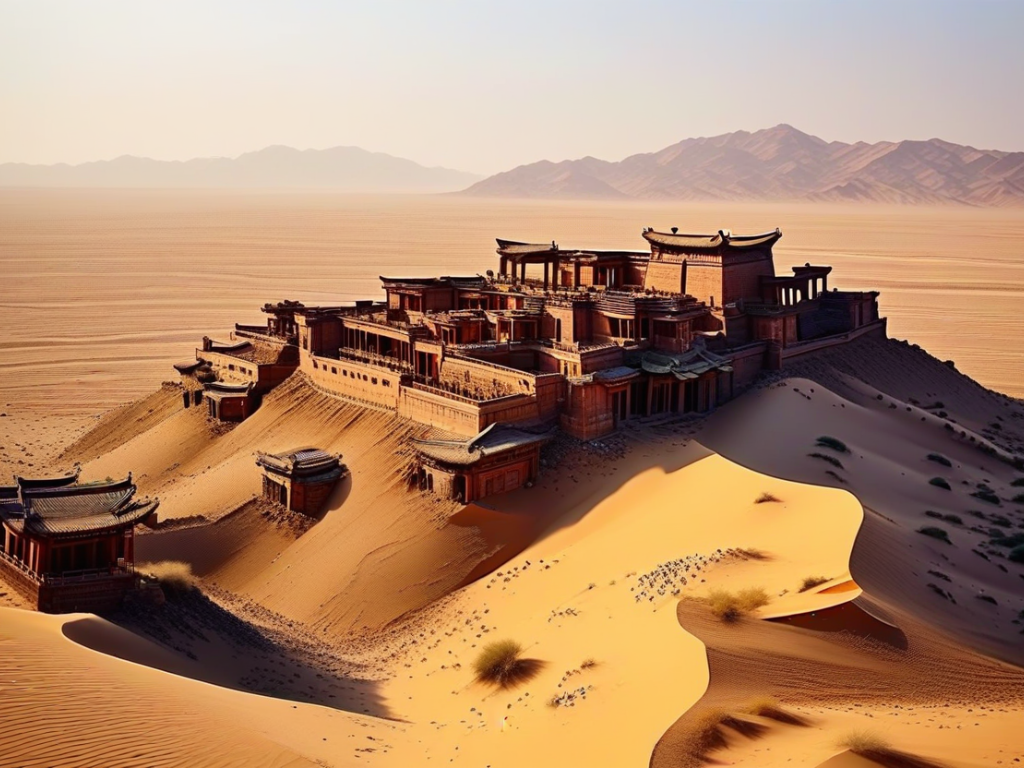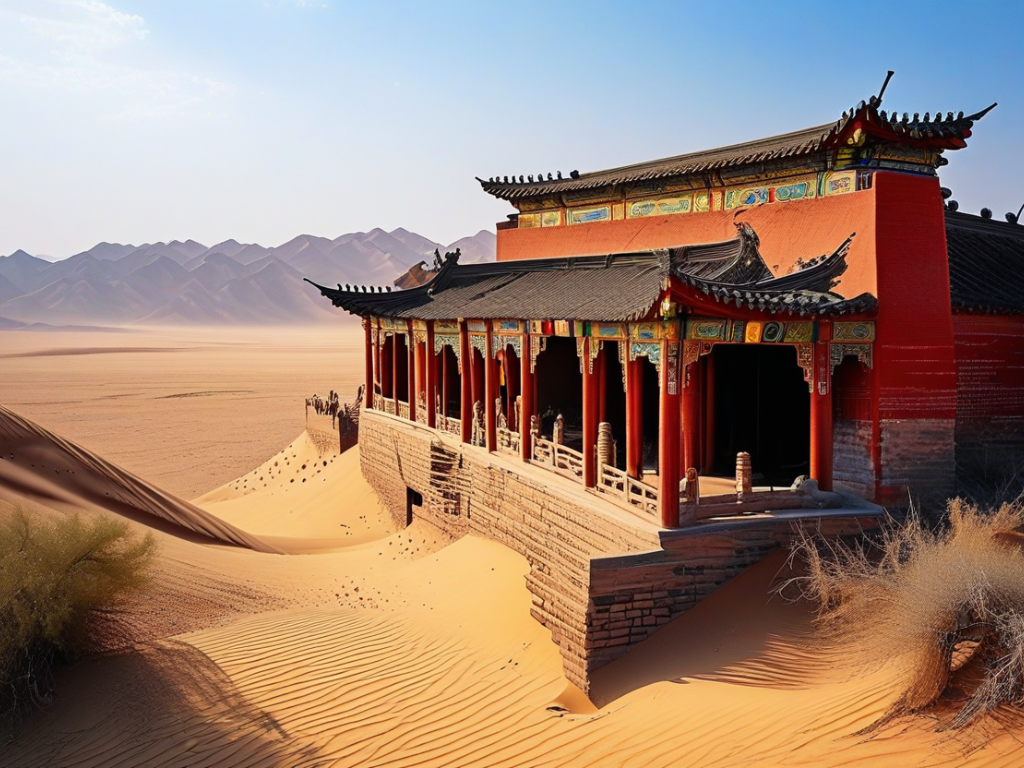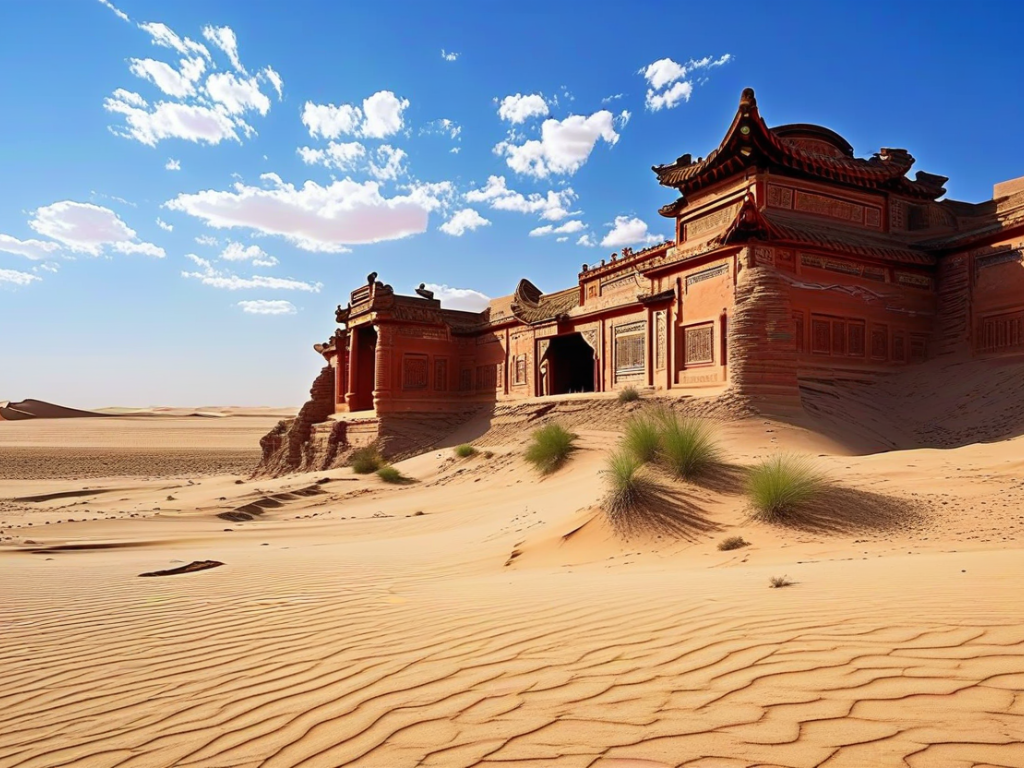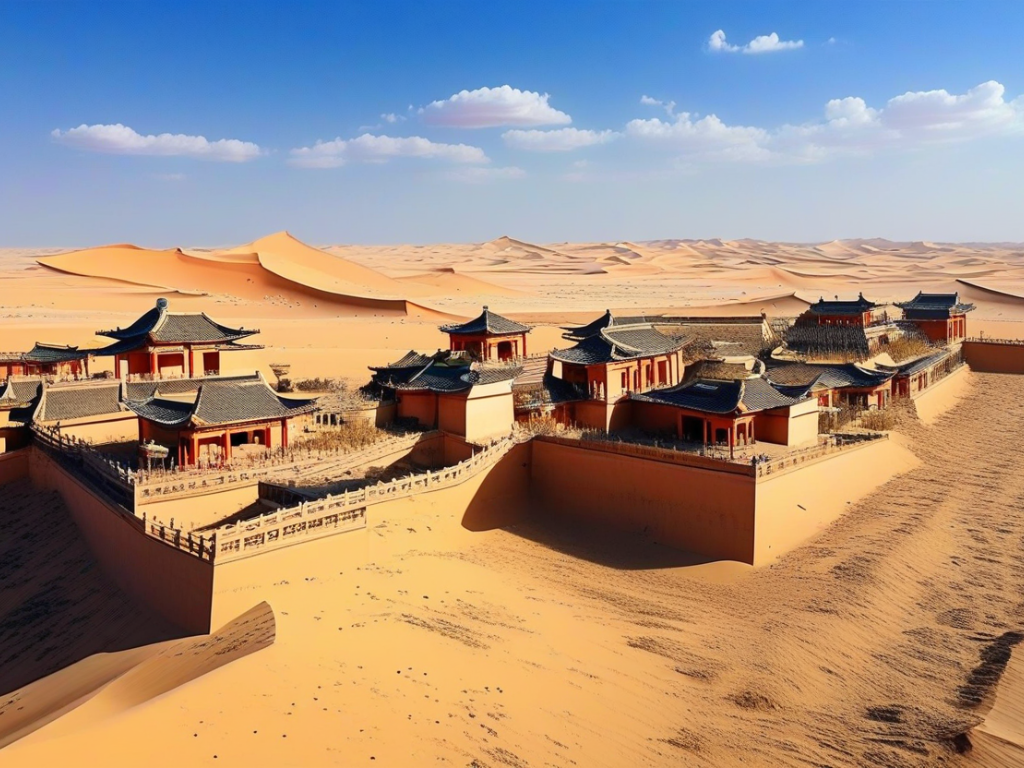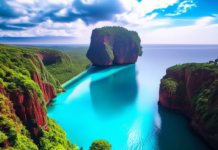Even though ancient oasis in the desert in China has always fascinated by its appearance, it became known only when it was in danger of disappearing. Oasis which is believed that is created 2,000 years ago is dramatically reduced because of the spread of deserts.The Chinese government has decided to do something about it and re-filled it with water.
Located on about six kilometers from the city of Dunhuang in northwest of China, Lake Crescent in the Gobi Desert (Yueyaquan in Chinese) is in a crescent shape and has always been a source of drinking water.
The depth of the lake from the ’60s is reduced from five meters on average less than one meter in the early 90s. Local government in 2006 decided to save the oasis by filling the lake with water. The lake is now 218 meters long and 54 meters wide and has a clean source of water.
Beside the lake there is a traditional pagoda and street with souvenir shop. This is an oasis very popular among tourists on camels and together with the guides they visit the peaks of the surrounding dunes regularly.
It is believed that for the remarkable survival of the lake in desert is responsible low height above sea level, while its location prevents the excess sand from the desert dunes to collapse in it.
Surrounded by high mountains, the city of Dunhuang has a dry climate – very hot summers and cold winters. Rain is very rare and when it falls it evaporates quickly. The city relies on tourism and is rich in historical monuments dating from the time of the Han Dynasty.
Spreading of deserts has become a major problem in China, with whom the government is trying to fight in a variety of ways and one of them is to build a “green wall” of the forest. As a result of the expansion of territory under the sand, China is increasingly affected by the sandstorms.
Lake Crescent is fascinating ancient oasis in China’s desert Gobi.



















